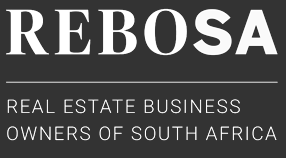Old-new house price gap narrows
Category Property market overview
It was 21.3 percent, or R411 700, cheaper to have bought an existing house in the fourth quarter of last year than to have had a new home built, according to the latest Absa quarterly housing review.
The price difference between a new and existing house is continuing to narrow.
It was at 21.8 percent in the third quarter of last year, 26.2 percent in the second quarter and 30.9 percent in the first quarter. It was at 36 percent in mid-2013 and has consistently narrowed every quarter since.
A narrowing in the price gap between new and existing homes is likely to eventually stimulate residential building activity.
Jacques du Toit, a property analyst at Absa, said the average nominal price of a new house declined by 1.9 percent year on year to R1 782 300 in the fourth quarter of last year after declining by 2.4 percent year on year in the third quarter.
Du Toit said the real price of a new house after adjustment for the impact of inflation dropped by 4.6 percent last year after declining by 4.2 percent in 2014. By contrast, the average price of an existing house increased by a nominal 6.6 percent year on year to about R1 370 600 in the fourth quarter of last year, resulting in a real year-on-year price growth of 1.6 percent.
The real price growth of an existing home was 2.3 percent year on year last year and 3.1 percent in 2014. The price difference between a new and existing house was narrowing despite Absa revealing that the cost of having a new house built had continued to increase at a rate above the consumer price inflation rate to 9.1 percent year on year in the fourth quarter of last year.
It said an 8 percent year-onyear growth in building costs was recorded for the full calendar year last year compared with 7.6 percent in 2014.
Du Toit previously stressed the cost of a new home could not be directly compared with building costs. He said the cost of a new home did not comprise only the building, but also the land. Absa said the average value of residential stands dropped by 0.2 percent last year and by 4.6 percent in real terms.
It added that the affordability of housing was on a gradually deteriorating trend in the past three to four years, which was reflected by the ratios of house prices and mortgage repayments to household disposable income.
Absa said this was the net result of trends in growth in house prices and nominal disposable income, while interest rates were on a gradually rising trend since early 2014, which negatively affected the affordability of housing from a mortgage repayment point of view up to late last year.
Du Toit said the financial pressure on consumers was expected to increase this year and the demand for rental property might rise and lead to higher rentals, possibly causing an increase in investor demand to buy rental property and some upward pressure on prices in this segment of the market.
The general outlook was for nominal house price growth to remain in the single digits for the next two years, with the risk for price growth to the downside. Based on expectations for nominal house price growth and consumer price inflation in 2016 and 2017, real price deflation is projected over the two-year period, he said.
Author: Business Report




